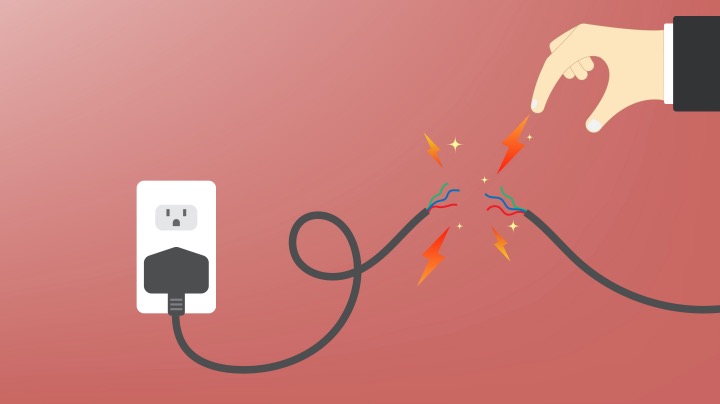Top Tips for Effective Electric System Troubleshooting
Troubleshooting electric systems requires a methodical approach, based in a comprehensive understanding of electrical concepts and safety and security protocols. By familiarizing oneself with circuit components, making use of important tools, and sticking to an organized examination technique, professionals can properly determine and settle concerns. The nuances of efficient troubleshooting expand beyond plain technological understanding; comprehending just how to record findings and prioritize safety can significantly influence results. As we check out these vital aspects additionally, it becomes clear that grasping this process is not simply helpful however necessary for success in the area.
Understand the Essentials
Understanding the fundamentals of electric systems is vital for efficient troubleshooting, as a solid foundation permits professionals to diagnose and resolve issues extra successfully. A thorough understanding of electrical concepts, such as voltage, current, resistance, and power, is crucial in recognizing the origin of troubles. Voltage is the electrical prospective distinction that drives present through a circuit, while resistance opposes the flow of existing, affecting the overall capability of the system.
Experience with circuit parts, including resistors, capacitors, diodes, and changes, is additionally extremely important. Each component plays a distinct duty in circuit habits and can influence performance when malfunctioning. Additionally, comprehending collection and parallel circuit setups is important, as these plans influence the distribution of voltage and current within the system.
Furthermore, understanding of safety and security protocols is indispensable. Professionals need to know prospective dangers, such as shock and brief circuits, to carry out secure troubleshooting practices. By understanding these foundational principles, service technicians boost their capability to perform reliable diagnostics and repairs, eventually resulting in improved performance and reliability of electric systems. This fundamental knowledge is the foundation of successful fixing undertakings.
Gather Necessary Equipment
Effective troubleshooting of electric systems calls for the ideal collection of tools to detect and resolve concerns precisely. A well-appointed technician can substantially improve efficiency and performance in determining problems. Vital devices include a multimeter, which determines voltage, current, and resistance, permitting accurate assessments of electrical elements. Secure meters are also valuable for gauging current without disconnecting the circuit, making certain safety and ease.
In addition, protected hand tools such as screwdrivers, pliers, and cable strippers are vital for safely controling electrical connections. It is additionally suggested to have a circuit tester on hand to verify the visibility of voltage in outlets and cables. For even more complex systems, a thermal imaging camera can aid find overheating components, indicating potential failings.

Adhere To an Organized Approach
Having gathered the appropriate tools, the following action in repairing electrical systems is to comply with a methodical strategy. A methodical approach ensures that professionals can identify faults successfully and precisely, lessening downtime and stopping unneeded repair work.
Begin by evaluating the system's schematic diagrams and specifications. Comprehending the layout and functional parameters will certainly offer find more information context for diagnosing issues. Next, isolate the problem location by making use of a procedure of elimination. This involves monitoring each part methodically, beginning with the source of power and functioning in the direction of the load.
Use testing tools, such as multimeters and oscilloscopes, to gather objective information regarding voltage, current, and resistance at numerous points within the system. This empirical evidence will electrical system troubleshooting certainly direct your troubleshooting initiatives and aid to verify or eliminate possible causes of failing.
In addition, think about environmental aspects that may influence the system's performance, such as temperature level variations or dampness ingress. An extensive examination of wiring, links, and elements will make certain that all opportunities are accounted for.
Paper Your Searchings For
Thorough paperwork is important in the fixing process of electrical systems. Exact documents improve the effectiveness of recognizing recurring concerns and help with communication amongst employee. Each finding should be carefully kept in mind, including signs and symptoms observed, tests carried out, and the results of those examinations. electrical system troubleshooting. This technique not just aids in comprehending the origin cause of the problem but also works as a recommendation for future repairing initiatives.

In addition, preserving a log of parts replaced or fixings executed is very useful. This details sustains inventory management and can aid examine the durability and reliability of specific parts.
Inevitably, the paperwork process need to be complete yet concise, making it possible for simple retrieval and testimonial visite site - electrical system troubleshooting. By focusing on thorough paperwork, professionals can create a beneficial data base that not just help in present troubleshooting yet likewise encourages future maintenance efforts, consequently boosting general system reliability

Prioritize Security Steps
Acknowledging the inherent dangers related to electrical systems is crucial for making sure safety during troubleshooting. Electric shock, burns, and equipment damage are simply a few of the possible risks that technicians deal with. Focusing on safety steps is not just a lawful obligation however additionally a moral necessary that safeguards both the technician and the surrounding atmosphere.
Prior to starting any troubleshooting task, service technicians need to wear suitable personal protective tools (PPE), including protected gloves, safety and security glasses, and flame-resistant clothing. Guaranteeing that the workspace is completely dry and devoid of mess can significantly decrease the danger of mishaps. It is essential to de-energize circuits prior to starting any kind of job, confirming that they are not live with the usage of a multimeter or voltage tester.
Establishing clear communication protocols with employee is also vital; this makes certain that every person knows possible dangers and the condition of the electrical system being dealt with. Having an emergency feedback strategy in location can prove invaluable in the occasion of an occurrence. By focusing on security steps, service technicians can efficiently mitigate threats and promote a more secure office.
Conclusion
Efficient electrical system fixing counts on an extensive understanding of essential concepts and a methodical technique. Focusing on safety procedures makes certain the well-being of individuals entailed and the integrity of the electrical system.